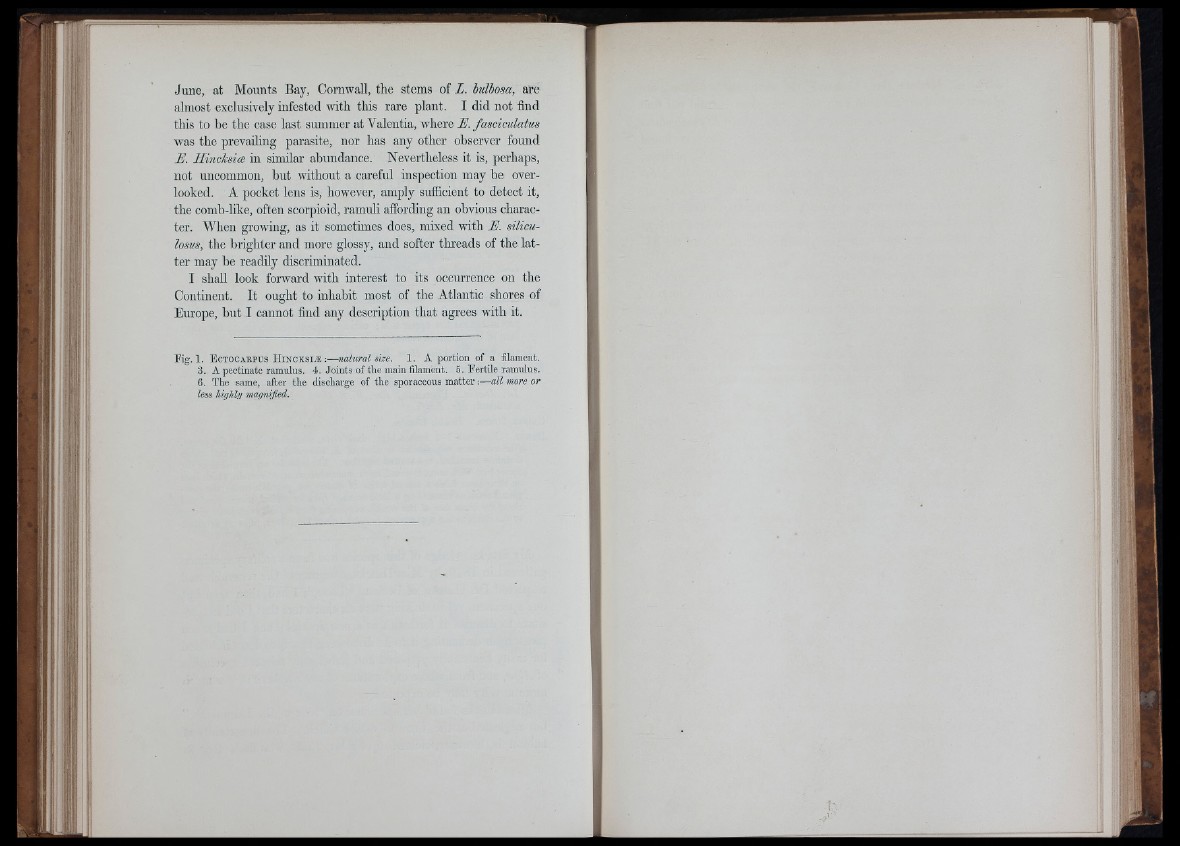
June, at Mounts Bay, Cornwall, the stems of L. lulhosa, are
almost exclusively infested with this rare plant. I did not find
this to be the case last summer at Valentia, where F . fasciculatus
was tlie prevailing parasite, nor has any other observer found
F. llincksicB in similar abundance. Nevertheless it is, perhaps
not uncommon, but without a careful inspection may be over
looked. A pocket lens is, however, amply sufficient to detect it
the comb-like, often scorpioid, ramuli affording an obvious cbarac
ter. When growing, as it sometimes does, mixed with F. silicu
losus, the brighter and more glossy, and softer tlmeads of the latter
may be readily discriminated.
I shall look forward with interest to its occurrence on the
Continent. It ought to inhabit most of the Atlantic shores of
Europe, but I cannot find any description that agrees with it.
Fig. 1. E c t o c a e pu s HiNCKSiiE :— natural size. 1. A portion of a filament.
3. A pectinate ramulus. 4. Joints of the main filament. 5. I'ertile ramulus.
6. The same, after the discharge of the sporaceous m a tte r:— all more or
less Uglily magnified.